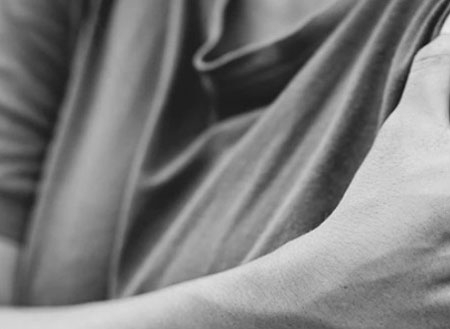The shoulder is a beautifully complex joint that allows all kinds of motion and function, but it can also sustain injury that prevents such. The Cuff Not Cup blog posted over a year ago explained the different pathologies and subsequent treatment associated with the rotator cuff. However, those muscles are not the only structures in the shoulder that can sustain injury. The labrum is the cartilage that lines the socket (or glenoid) where the ball of the humerus bone resides. Damage to this tissue can result from both traumatic or acute injury as well as repetitive activities.
Three common varieties of labral tears exist. A SLAP ( superior labrum, anterior to posterior) tear is damage to the labrum from front to back on the upper aspect of the tissue that often occurs in athletes or people in the workforce who perform overhead activity. A Bankart tear occurs in the lower portion of the labrum and most commonly occurs during a shoulder dislocation. A less common, but possible, tear is that of the posterior labrum in the back of the shoulder joint often caused by weightlifting maneuvers. People who have some kind of labral tear often describe catching, popping, and grinding rather than smooth, fluid, quiet motion of the shoulder as well as discomfort that prevents them from performing normal activity.
Diagnosing a labral tear starts with obtaining a detailed history from the patient on when the symptoms started followed by a clinical examination that tests strength, motion, and stability as well as x-rays to rule out other significant injuries. Ultimately, a special MRI is ordered to further assess the integrity of the labrum. Rather than a stereotypical MRI, using a technique that involves a contrast dye being injected into the joint improves the sensitivity of the images so that any tears to the cartilaginous tissue can more clearly be identified on the images produced by the Magnetic Resonance Imaging.
Once identified, the extent of the tear and severity of the symptoms determines what kind of management is recommended. Many labral tears can be treated conservatively with rest from aggravating activities, physical therapy, and over-the-counter medications to control discomfort. With persistent pain, your physician may offer a cortisone injection to help calm down inflammation caused by any underlying arthritis, but generally speaking, cortisone does not alleviate labral tear pain. More involved tears may require surgical management to repair or debride (clean up) the tissue to achieve restored function. Surgery to repair the torn labrum requires some time in a sling to immobilize the joint while it heals and some formal physical therapy to subsequently get the joint moving again once it is safe to do so.
If the people around you comment on the cacophony of noises coming from your achy shoulder, give us a call at Orthopaedic Associates of Wisconsin today to see how we can help quiet those noises and get you back to your favorite activities! After all, baseball season is coming!

